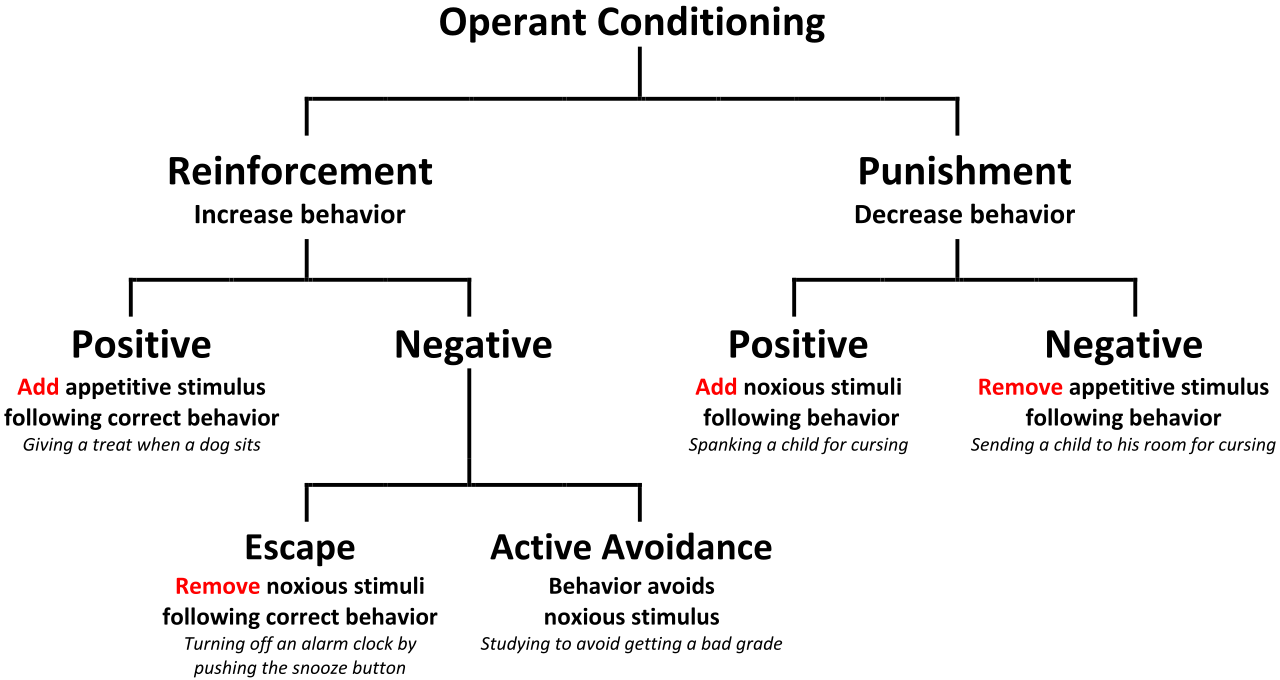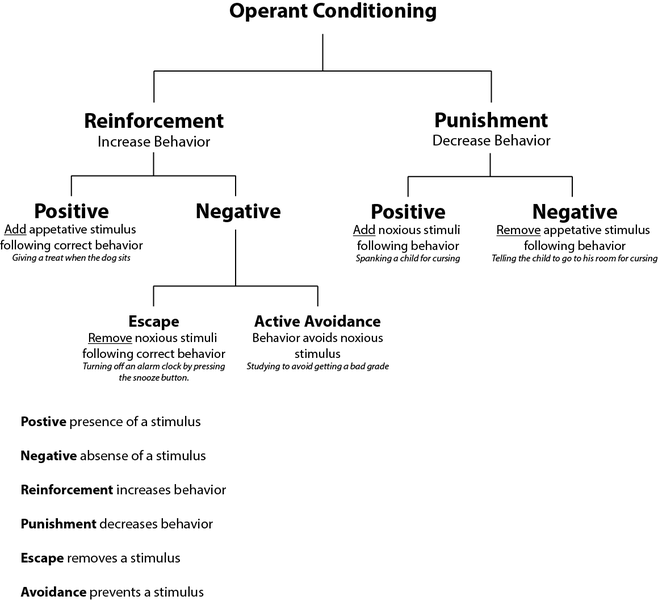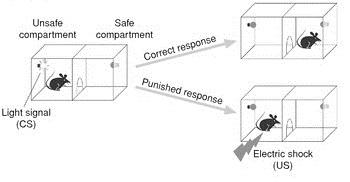Your What does avoidance behavior mean in psychology images are ready in this website. What does avoidance behavior mean in psychology are a topic that is being searched for and liked by netizens now. You can Download the What does avoidance behavior mean in psychology files here. Download all royalty-free photos and vectors.
If you’re searching for what does avoidance behavior mean in psychology images information connected with to the what does avoidance behavior mean in psychology keyword, you have visit the right blog. Our site frequently gives you suggestions for downloading the highest quality video and image content, please kindly search and locate more informative video articles and images that fit your interests.
What Does Avoidance Behavior Mean In Psychology. In avoidance behavior the occurrence of the behavior prevents the presentation of an aversive stimulus. Avoidance coping can lead to substance abuse social withdrawal and other forms of escapism. Avoidance behavior is a pervasive pattern of avoiding or withdrawing from social interaction. In avoidance behavior the occurrence of the behavior prevents the presentation of an aversive stimulus.
 Reinforcement Punishment Avoidance Learning And Escape Learning Ppt Video Online Download From slideplayer.com
Reinforcement Punishment Avoidance Learning And Escape Learning Ppt Video Online Download From slideplayer.com
Any behavioral act that enables an individual to avoid anticipated unpleasant or painful situations stimuli or. In avoidance behavior the occurrence of the behavior prevents the presentation of an aversive stimulus. Understanding Insecure Avoidant Attachment. Avoidance coping involves trying to avoid stressors rather than dealing with them. In psychology avoidance coping is a coping mechanism and form of experiential avoidance. Psychology Definition of AVOIDANCE BEHAVIOR.
Psychology Definition of AVOIDANCE BEHAVIOR.
What does avoidance mean in psychology. Avoidance behavior is a pervasive pattern of avoiding or withdrawing from social interaction. This is achieved through what is known as a discriminative stimulus a stimulus that is itself neutral but precedes the one that is aversive so that the individual becomes aware of what is going to happen and therefore can make the decision to give the answer to avoid it. Coping refers to behaviors that attempt to protect oneself from psychological damage. Refers to the practice or an instance of keeping away from particular situations activities environments individuals things or subjects of thought because of either a the anticipated negative consequences of such or b the anticipated anxious or painful feelings associated with those things or events. High levels of avoidance.
 Source: pediaa.com
Source: pediaa.com
Refers to the practice or an instance of keeping away from particular situations activities environments individuals things or subjects of thought because of either a the anticipated negative consequences of such or b the anticipated anxious or painful feelings associated with those things or events. Both escape and avoidance are types of negative reinforcement both result in an increase of the behavior that terminated or avoided the aversive stimulus. In psychology avoidanceavoidant coping or escape coping is a maladaptive coping mechanism characterized by the effort to avoid dealing with a stressor. Any behavioral act that enables an individual to avoid anticipated unpleasant or painful situations stimuli or. In avoidance behavior the occurrence of the behavior prevents the presentation of an aversive stimulus.
 Source: researchgate.net
Source: researchgate.net
What does trap stand for in psychology. High uncertainty avoidance often requires rigid codes of behavior and beliefs. In avoidance behavior the occurrence of the behavior prevents the presentation of an aversive stimulus. Avoidance coping can lead to substance abuse social withdrawal and other forms of escapism. 45 Votes Passive avoidance is a task in which animals avoid an aversive stimulus by inhibiting a previously punished response compare with Active avoidance learning.
 Source: sciencedirect.com
Source: sciencedirect.com
High levels of avoidance. The way that parents interact with their infant during the first few months of its life largely determines the type of attachment it will form with them. What does trap stand for in psychology. Any behavioral act that enables an individual to avoid anticipated unpleasant or painful situations stimuli or. Avoidance coping refers to choosing your behavior based on trying to avoid or escape particular thoughts or feelings.
 Source: cell.com
Source: cell.com
Avoidance behavior is a pervasive pattern of avoiding or withdrawing from social interaction. Both escape and avoidance are types of negative reinforcement both result in an increase of the behavior that terminated or avoided the aversive stimulus. 45 549 Views. In other words the dog avoids the aversive stimulus by doing another behavior. In psychology a social trap is a conflict of interest or perverse incentive where a group of people act to obtain short-term individual gains which in the long run leads to a loss for the group as a whole.
 Source: researchgate.net
Source: researchgate.net
Psychology Definition of AVOIDANCE BEHAVIOR. 45 Votes Passive avoidance is a task in which animals avoid an aversive stimulus by inhibiting a previously punished response compare with Active avoidance learning. Any behavioral act that enables an individual to avoid anticipated unpleasant or painful situations stimuli or. What is avoidance behavior. Avoidance behaviour type of activity seen in animals exposed to adverse stimuli in which the tendency to act defensively is stronger than the tendency to attack.
 Source: pinterest.com
Source: pinterest.com
This is achieved through what is known as a discriminative stimulus a stimulus that is itself neutral but precedes the one that is aversive so that the individual becomes aware of what is going to happen and therefore can make the decision to give the answer to avoid it. Avoidance coping involves trying to avoid stressors rather than dealing with them. What does trap stand for in psychology. Avoidance behavior is a pervasive pattern of avoiding or withdrawing from social interaction. It is characterized by a persons efforts conscious or unconscious to avoid dealing with a stressor in order to protect oneself from the difficulties the stressor presents.
 Source: pediaa.com
Source: pediaa.com
In other words the dog avoids the aversive stimulus by doing another behavior. In other words the dog avoids the aversive stimulus by doing another behavior. This leaves partners and friends in confusion left to try and figure out why the relationship suddenly became an awkward establishment. Behaviors that are more compatible with natural defensive responses to aversive stimuli see SSDR in glossary are more easily learned. In avoidance behavior the occurrence of the behavior prevents the presentation of an aversive stimulus.
 Source: slideplayer.com
Source: slideplayer.com
The behavior is to avoid or to remove oneself from the situation. The underlying implication that a single neural mechanism is involved such as a specific part of the brain which under electrical stimulation seems to inflict punishment remains only a hypothesis. There may easily be intolerance of unorthodox behaviors and ideas. It may seem like avoiding discomfort could be helpful however it results in never addressing the actual issue. How are avoidance behaviors learned.
 Source: slideplayer.com
Source: slideplayer.com
In psychology a social trap is a conflict of interest or perverse incentive where a group of people act to obtain short-term individual gains which in the long run leads to a loss for the group as a whole. Avoidance behaviour type of activity seen in animals exposed to adverse stimuli in which the tendency to act defensively is stronger than the tendency to attack. What does trap stand for in psychology. Understanding Insecure Avoidant Attachment. In psychology avoidanceavoidant coping or escape coping is a maladaptive coping mechanism characterized by the effort to avoid dealing with a stressor.
 Source: britannica.com
Source: britannica.com
In avoidance behavior the occurrence of the behavior prevents the presentation of an aversive stimulus. The way that parents interact with their infant during the first few months of its life largely determines the type of attachment it will form with them. In avoidance behavior the occurrence of the behavior prevents the presentation of an aversive stimulus. Psychology Definition of AVOIDANCE BEHAVIOR. This leaves partners and friends in confusion left to try and figure out why the relationship suddenly became an awkward establishment.
 Source: sciencedirect.com
Source: sciencedirect.com
There may easily be intolerance of unorthodox behaviors and ideas. It may seem like avoiding discomfort could be helpful however it results in never addressing the actual issue. In other words the dog avoids the aversive stimulus by doing another behavior. Behaviors that are more compatible with natural defensive responses to aversive stimuli see SSDR in glossary are more easily learned. How are avoidance behaviors learned.
 Source: sciencedirect.com
Source: sciencedirect.com
In avoidance behavior the occurrence of the behavior prevents the presentation of an aversive stimulus. Coping refers to behaviors that attempt to protect oneself from psychological damage. Any behavioral act that enables an individual to avoid anticipated unpleasant or painful situations stimuli or. Both escape and avoidance are types of negative reinforcement both result in an increase of the behavior that terminated or avoided the aversive stimulus. It may seem like avoiding discomfort could be helpful however it results in never addressing the actual issue.

In other words the dog avoids the aversive stimulus by doing another behavior. It is characterized by a persons efforts conscious or unconscious to avoid dealing with a stressor in order to protect oneself from the difficulties the stressor presents. In psychology avoidanceavoidant coping or escape coping is a maladaptive coping mechanism characterized by the effort to avoid dealing with a stressor. What is avoidance behavior. High levels of avoidance.
 Source: cell.com
Source: cell.com
There may easily be intolerance of unorthodox behaviors and ideas. It is characterized by a persons efforts conscious or unconscious to avoid dealing with a stressor in order to protect oneself from the difficulties the stressor presents. How are avoidance behaviors learned. In other words the dog avoids the aversive stimulus by doing another behavior. In avoidance behavior the occurrence of the behavior prevents the presentation of an aversive stimulus.
 Source: opentextbc.ca
Source: opentextbc.ca
Behaviors that are more compatible with natural defensive responses to aversive stimuli see SSDR in glossary are more easily learned. Both escape and avoidance are types of negative reinforcement both result in an increase of the behavior that terminated or avoided the aversive stimulus. Avoidance coping refers to choosing your behavior based on trying to avoid or escape particular thoughts or feelings. In avoidance behavior the occurrence of the behavior prevents the presentation of an aversive stimulus. Psychology Definition of AVOIDANCE BEHAVIOR.
 Source: ncbc.medicine.uiowa.edu
Source: ncbc.medicine.uiowa.edu
In avoidance behavior the occurrence of the behavior prevents the presentation of an aversive stimulus. Coping refers to behaviors that attempt to protect oneself from psychological damage. In avoidance behavior the occurrence of the behavior prevents the presentation of an aversive stimulus. In psychology avoidance coping or avoidant coping also known as escape coping is a maladaptive coping mechanism characterized by a persons efforts conscious or unconscious to avoid dealing with a stressor. The underlying implication that a single neural mechanism is involved such as a specific part of the brain which under electrical stimulation seems to inflict punishment remains only a hypothesis.
 Source: pinterest.com
Source: pinterest.com
The relationship between the primary caregiver and the baby can create a secure anxious disorganized or avoidant attachment. Avoidance behaviour type of activity seen in animals exposed to adverse stimuli in which the tendency to act defensively is stronger than the tendency to attack. In psychology avoidance coping is a coping mechanism and form of experiential avoidance. Avoidance copingalso known as avoidant coping avoidance behaviors and escape copingis a maladaptive form of coping in which a person changes their behavior to avoid thinking about feeling or doing difficult things. This can look like avoiding new job opportunities career advancements relationships social situations recreational activities and family get-togethers.
 Source: sciencedirect.com
Source: sciencedirect.com
The relationship between the primary caregiver and the baby can create a secure anxious disorganized or avoidant attachment. High levels of avoidance. 45 549 Views. Avoidance coping can lead to substance abuse social withdrawal and other forms of escapism. In psychology avoidance coping is a coping mechanism and form of experiential avoidance.
This site is an open community for users to do sharing their favorite wallpapers on the internet, all images or pictures in this website are for personal wallpaper use only, it is stricly prohibited to use this wallpaper for commercial purposes, if you are the author and find this image is shared without your permission, please kindly raise a DMCA report to Us.
If you find this site serviceableness, please support us by sharing this posts to your own social media accounts like Facebook, Instagram and so on or you can also bookmark this blog page with the title what does avoidance behavior mean in psychology by using Ctrl + D for devices a laptop with a Windows operating system or Command + D for laptops with an Apple operating system. If you use a smartphone, you can also use the drawer menu of the browser you are using. Whether it’s a Windows, Mac, iOS or Android operating system, you will still be able to bookmark this website.






